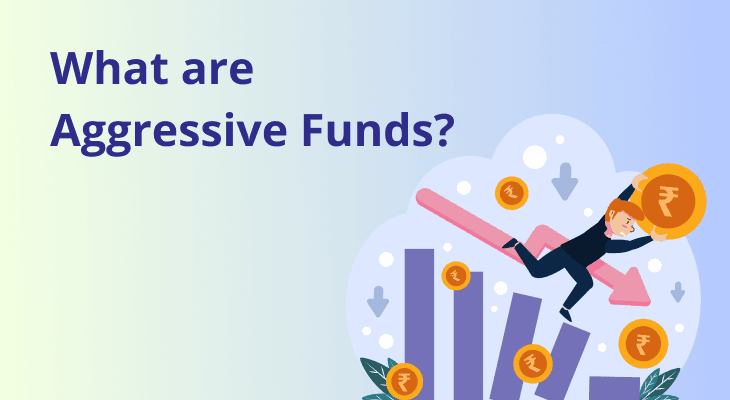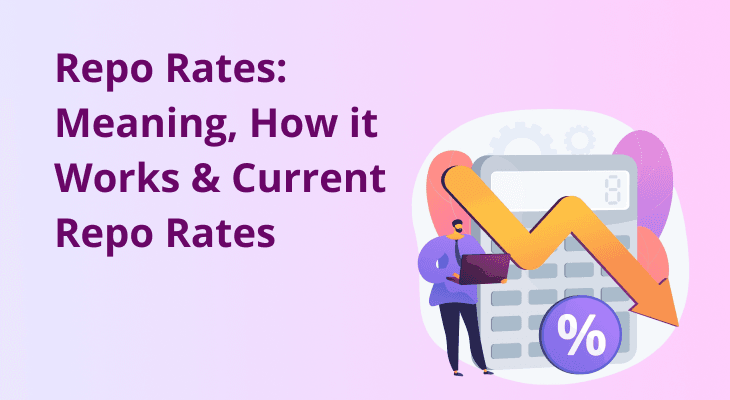
What Are Aggressive Funds?
In the ever-expanding universe of mutual funds, aggressive mutual funds occupy a unique space. Designed to balance growth potential with an element of safety, these funds combine equity and debt in a single portfolio, making them an appealing choice for investors who want to grow their wealth without committing fully to high-risk strategies.
With the increasing popularity of hybrid mutual funds in India, aggressive hybrid funds have emerged as a preferred investment vehicle for many. Whether you are a first-time investor looking for diversification or a seasoned market participant wanting better asset allocation, understanding what aggressive funds offer is the first step to making informed decisions.
In this article, we will explore the structure, benefits, and risks of aggressive mutual funds, compare them with other types of hybrid and equity funds, and help you decide whether they align with your investment goals.
What Are Aggressive Funds?
Aggressive funds are a sub-category of hybrid mutual funds that invest predominantly in equity and equity-related instruments, while also maintaining a modest allocation to debt securities. According to SEBI, an aggressive hybrid fund must allocate 65% to 80% of its total assets to equities, and the remaining 20% to 35% to fixed-income instruments such as bonds, debentures, and money market instruments.
This structure allows aggressive mutual funds to capture equity market upside while having a debt cushion to reduce volatility. The equity allocation drives growth, whereas the debt component adds a layer of stability, especially in turbulent markets. The idea is to offer investors the best of both worlds: that is, potential for higher returns and a slightly lower risk than pure equity funds.
Features Of An Aggressive Fund
Aggressive mutual funds come with a few distinguishing characteristics that set them apart from both equity and balanced hybrid funds.
- Asset allocation mandate: SEBI guidelines require that aggressive funds have a consistent allocation: 65%–80% in equity and 20%–35% in debt. This tight regulation enables strategic flexibility while preserving the fund’s core structure.
- Equity taxation: Since these funds maintain more than 65% exposure to equities, they are taxed like equity funds. This makes them more tax-efficient compared to debt-dominated funds.
- Portfolio rebalancing: Fund managers regularly rebalance the portfolio to maintain the required asset mix. This ensures that the fund stays aligned with its aggressive mandate regardless of market swings.
- Growth with relative stability: The equity portion allows for capital appreciation, while the debt instruments provide regular interest income and reduce downside risk.
- Professional management: These funds are actively managed, meaning fund managers select specific stocks and debt instruments to optimise returns and reduce risk.
- Accessibility and liquidity: Like most mutual funds, aggressive funds can be purchased via lump sum or SIP (Systematic Investment Plan) and can be redeemed easily.
Types Of Aggressive Mutual Funds
There are two major types of aggressive mutual funds, which are described below.
Aggressive Growth Funds
These funds are designed for investors who want to prioritise capital appreciation. They predominantly invest in growth-oriented equities, often in mid- and small-cap stocks, with a smaller proportion allocated to debt. These funds carry a higher risk but also offer the potential for substantial long-term returns.
Aggressive Hybrid Funds
They invest across equity and debt, maintaining the SEBI-mandated 65%–80% equity exposure. They are ideal for investors seeking a balanced fund which attains growth from equity, and finds stability through debt. The automatic rebalancing feature ensures the portfolio remains within the prescribed risk bracket.
How Do Aggressive Mutual Funds Work?
Aggressive mutual funds are actively managed to adapt to market conditions while maintaining their prescribed asset allocation. Here are some of the key aspects of their operation:
#1. Equity Allocation
The fund manager selects a mix of stocks (usually a blend of large-cap, mid-cap, and small-cap companies) to build the equity portion. Depending on market outlook, the manager may lean more towards stable large-cap stocks or switch to higher-risk, high-reward mid/small-cap equities.
#2. Debt Allocation
The debt portion is typically invested in instruments such as government securities, corporate bonds, and money market instruments. These generate predictable returns and lower the fund's overall volatility.
#3. Rebalancing
As the equity portion grows or shrinks due to market movements, the fund manager periodically rebalances the portfolio to bring the asset allocation back within the regulatory limits. This prevents overexposure to a single asset class and ensures risk control.
#4. Arbitrage Opportunities
Unlike balanced funds, aggressive hybrid funds are allowed to utilise arbitrage strategies to exploit price inefficiencies between cash and derivatives markets.
Why Should You Invest In Aggressive Mutual Funds?
Aggressive mutual funds are built for investors who want to strike a balance between growth and stability. They are suitable for investors with moderate-to-high risk tolerance and long-term financial goals. Here’s why they might be a good addition to your portfolio:
Diversification With A Growth Bias
Aggressive funds are hybrid in nature, meaning they invest across both equity and debt. As 65% to 80% of assets are allocated to equities, they lean toward growth.
This enables your portfolio to benefit from equity market rallies while being partially shielded during downturns. Diversification also reduces the impact of any single underperforming asset on your overall portfolio, improving long-term stability and compounding outcomes.
Lower Volatility Than Pure Equity Funds
Because aggressive funds allocate a significant portion of the portfolio to debt instruments, they are generally less volatile than 100% equity funds.
This makes them more suitable for investors who are uncomfortable with sudden market swings but still want the upside potential of equities. The debt portion acts as a cushion during market corrections, which can prevent panic-driven selling and promote long-term investment discipline.
They Are Tax Efficient
Aggressive hybrid funds are taxed like equity funds due to their equity-heavy composition.
- Short-Term Capital Gains: taxed at 20% if you redeem within one year.
- Long-Term Capital Gains: exempt if below ₹1.25 lakh in a financial year. Returns above that limit attract 12.5% LTCG tax.
This tax treatment is more favourable than most debt or conservative hybrid funds, which are taxed at your income slab rate. For long-term investors, this can significantly enhance post-tax returns.
They Are Automatically Rebalanced
One of the key benefits of investing in an aggressive fund is that you don’t have to manually adjust your asset allocation. The fund manager continuously rebalances the portfolio to maintain the prescribed equity-debt ratio.
This is especially valuable during market volatility, as it ensures that your exposure remains consistent with your risk tolerance and market conditions.
Better Risk-Adjusted Returns
Because of their dual exposure, aggressive funds tend to offer better risk-adjusted returns compared to pure equity funds. The equity portion aims to beat inflation and deliver real growth, while the debt allocation reduces volatility.
Over time, this combination enhances portfolio efficiency, especially when markets are unpredictable. Investors seeking consistent long-term wealth creation often find this mix highly advantageous.
Risks and Considerations
While aggressive mutual funds cushion risk by allocating a portion of your funds in debt instruments, they are not without risks. Understanding these risks is essential before investing:
- Market volatility: With 65%–80% of the portfolio in equities, these funds are sensitive to stock market fluctuations. During market corrections or downturns, the equity portion can decline significantly, impacting your overall returns. Although the debt component offers some cushion, it cannot fully eliminate downside risk.
- Interest rate fluctuations: The debt portion is subject to interest rate risk. When rates rise, bond prices fall, potentially reducing returns from the fixed-income allocation. This may limit the expected “safety net” in a rising rate environment.
- No capital guarantee: Aggressive funds do not guarantee your invested amount. Returns are market-linked, and short-term volatility could result in temporary losses. A longer investment horizon (typically 3+ years) is advisable to allow for recovery and growth.
- Dependence on fund management: Since these are actively managed funds, performance depends heavily on the fund manager’s skill in selecting stocks, managing debt exposure, and rebalancing. A weak management strategy may result in underperformance even in favourable markets.
- Exit loads and liquidity: Some aggressive funds charge exit loads if redeemed within a specified period (usually 1 year). While they are more liquid than fixed assets, redeeming during a market dip may result in lower returns.
Conclusion
Aggressive mutual funds tread a middle path between pure equity and balanced hybrid funds. With their higher equity allocation, they cater to investors who are comfortable with some risk and are seeking better returns than what conservative funds can offer. At the same time, the debt allocation provides stability, reducing overall volatility.
They are suitable for long-term investors who have financial goals five years or more into the future. If you're someone who wants equity-like returns but with a touch of caution, aggressive hybrid funds are worth considering. With regular rebalancing, tax benefits, and professional management, they offer a smart solution for building wealth steadily over time.
FAQ
What is an aggressive mutual fund?
An aggressive mutual fund is a type of hybrid fund that invests 65–80% of its portfolio in equity and the rest in debt instruments. It aims to generate long-term capital appreciation while reducing volatility.
Are aggressive funds suitable for short-term investing?
No. Due to their equity exposure, aggressive funds are better suited for medium- to long-term goals. Short-term market fluctuations can impact performance, making them less ideal for short horizons.
How are aggressive mutual funds taxed?
They follow equity taxation rules. STCG (for holdings under 1 year) is taxed at 20%. LTCG (for holdings over 1 year) is tax-free up to ₹1.25 lakh and taxed at 12.5% thereafter.
Are aggressive mutual funds safer than equity funds?
While aggressive funds are less volatile than pure equity funds due to their debt component, they still carry significant market risk and are not entirely safe.
Can aggressive hybrid funds be used for SIPs?
Yes, most aggressive funds allow SIP investments. SIPs help average out purchase costs and bring investment discipline.
Who should consider investing in aggressive funds?
They are ideal for investors looking for equity exposure with some stability, especially those saving for long-term goals like education, housing, or retirement.


